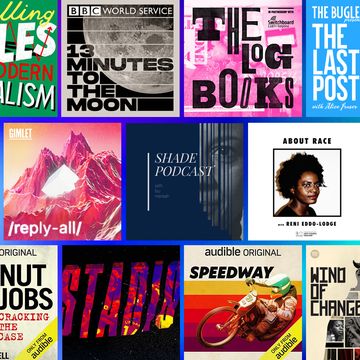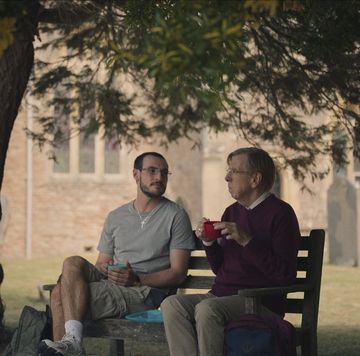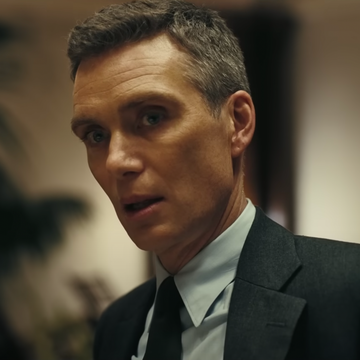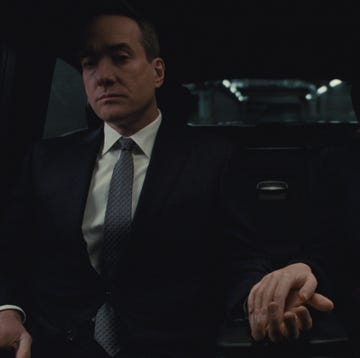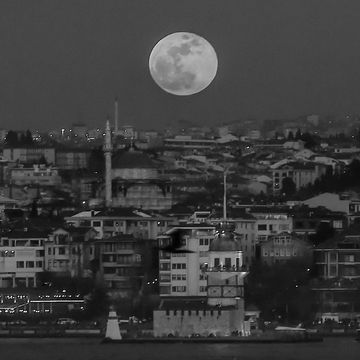Late last week, Page Six reported that Amazon Studios indefinitely halted the release of Woody Allen’s new film A Rainy Day in New York, signalling what could be the final cut-to-black in the director’s storied, and scandal-ridden, film and comedy career. After a lukewarm, if not sour, response to Allen’s last film Wonder Wheel, and in the wake of a #MeToo-era surge to recognise the legitimacy of decades-old sexual assault allegations from adopted daughter Dylan Farrow, it seems only inevitable that now would be the time for the 82-year-old cinema icon and his prominence as a beloved fixture of Americana to face a real reckoning.
If this really is the end for the director, then it will have taken Hollywood more than 26 years to distance itself from Allen after Farrow’s accusations were raised in 1992. It’s unsurprising that Allen’s creative career has been able to survive—and flourish—in the decades since; his estranged son Ronan Farrow’s Pulitzer Prize-winning reportage of the alleged systemic abuse Harvey Weinstein inflicted on countless women in Hollywood shed light on the industry’s most powerful players and their ability to turn a blind eye to toxic behaviour. But what’s different about Woody Allen is that he represented, in much of his work, a sort of “nice guy” identity that flew right in the face of abusive, domineering alpha types like Weinstein.
Not unlike the cases of Louis C.K. or Aziz Ansari, two similarly “nice guy” comedian/filmmakers who were culturally ousted during the #MeToo movement and have been making headlines for their efforts to crawl back into public careers, Woody Allen’s comic trademark was, for over half a century, a form of sensitive, sincere, emotional-yet-unthreatening masculinity that seemed perfectly viable as a framework for empathetic young men who may feel sidelined by the trappings of our power-male-centric culture. But as these “nice guy” cases continue to pop up in film, media, and every other place where men exist in a position of power, we are finding that the “soft” model of masculinity may be just as dangerous as its more recognisable alternative—forcing us to reconsider the lessons we are teaching impressionable young men, especially in classic works of cinema from iconic “nice guys” such as Woody Allen.
It was reported last year in late October that Allen’s latest film would feature a relationship between a 44-year-old man and a 15-year-old girl. Regardless of where you stand on the tiresome debate of “separating the art from the artist,” it’s difficult to ignore this bizarre (and recurring) phenomenon of age disparate couplings in Allen’s work—ranging from one-liners in his dialogue to a central plot point in his 1979 film Manhattan. All of the director’s films are works of fiction, but they’re unmistakably inspired by the neuroses of his public persona. We don’t know exactly how this scenario would have been presented in A Rainy Day in New York, but we do have a precedent for the way Allen promotes emotionally abusive relationships between men and women from his other major works within his vast filmography.
Allen constantly idolises morally questionable romances between older men and much younger women (the former characters, if not played by him, are portrayed by actors doing their best Woody Allen impressions). Even in his most beloved movies like Hannah and Her Sisters, Husbands and Wives, and Midnight in Paris lies the troubling sub-current of emotionally unstable female characters and their intellectually dominating male counterparts. Diane Keaton’s character in Annie Hall, arguably Allen’s most popular film, perhaps represents the original “manic pixie dream girl”: a ravishing, weird, volatile, and ultimately weak archetype for women that embodies all the negative ideas of femininity through the objectifying gaze of a man looking for less of a partner and more of a vacation from reality. It is a vision of femininity that suffers for being irrational or precarious, and an image of masculinity that must seek to conquer, or come to terms with weak, “crazy” women—while still being allowed to be compulsive, obsessive, or downright emotionally abusive themselves.
This type of “nice guy” masking calls to mind a famous quote from Orson Welles, which went viral in January after Clickhole writer Ben Kling shared it on Twitter. “I hate Woody Allen... He has the Chaplin disease. That particular combination of arrogance and timidity sets my teeth on edge,” Welles once said. “He is arrogant. Like all people with timid personalities, his arrogance is unlimited. Anybody who speaks quietly and shrivels up in company is unbelievably arrogant. He acts shy, but he’s not. He’s scared. He hates himself, and loves himself, a very tense situation.”
Although Welles was certainly not the healthiest archetype for masculinity himself, his conception of arrogance quite vividly re-contextualises the image of our “modest” Woody Allen, a sweetheart dweeb with a big brain and even bigger heart. “To me it’s the most embarrassing thing in the world—a man who presents himself at his worst to get laughs, in order to free himself from his hang-ups,” Welles said. “Everything he does on the screen is therapeutic.”
In questioning himself on screen, and fashioning himself the Everyman, Allen effectively guides his audience into accepting his own set of moral rules. But if his onscreen doppelgangers are often so immune from repercussions—or if Allen’s nebbishly charming persona at least soften the blows he delivers to his characters—what message does that send to young impressionable boys who take after Allen and the worldview he sets forth in his films?
For those of us who found a mentor figure in Allen early on in our exploration of cinema and comedy, it’s difficult to let go. I’d assume many comedy fans found their worldviews, personalities, and artistic pursuits somehow shaped by Louis C.K. or Aziz Ansari; likewise, Allen was, for me and countless other sensitive young artists across several generations, the archetype for how to function in a society that alienates men who don’t fit the traditional mould for masculinity. Many of us have struggled to give up Woody Allen, especially when stalwarts like Alec Baldwin, Diane Keaton, and Robert B. Weide, who directed and produced the comprehensive Woody Allen: A Documentary, constantly surface during Allen’s worst media debacles to assure us that the infamous octogenarian is a virtuous person. Regardless of his supposed innocence or guilt, one thing is for sure: It’s hard for people to forget about Woody. His prolific body of work—and the personal nature of it—has made moving on so complicated.
Perhaps what’s most difficult to answer here is the inevitable question: If Woody Allen’s model for masculinity is not acceptable, then who do sensitive boys have to look to, when people tell them to “sack up” or “be a man?” Certainly not a rage-addled, infamously greedy narcissist like Orson Welles. More and more, it seems that virtually every type of masculinity, deep down, is corrupted with huge flaws. That’s why, especially in light of the #MeToo movement, it’s becoming starkly apparent that our conception and definition of masculinity is in dire need of an update.
Maybe the first step to fixing broken, outdated gender roles is the doing away of the toxic notions from seemingly friendly figures of prominence like Woody Allen. When people ask what to do with his vast archive of classic and historically relevant films, perhaps the answer is not to continue teaching them as just that: historical works of contemporary art. Instead, maybe it’s just time to shelve them, let them collect dust, and keep looking forward to find other voices—across the gender spectrum—to embrace and also encourage, allowing them to steer, through their art, the next generations of young people into the complicated and often messy world in which we live.
Dom Nero is a Senior Creative Producer at Esquire, where he also writes about film, tv, tech, and video games. Elsewhere, Dom hosts Eye of the Duck, a podcast about essential movie scenes.



